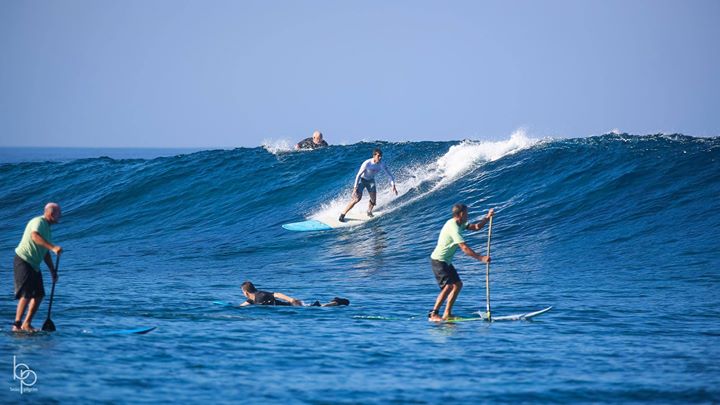Many surfers think that enjoying the thrills of surfing in Fiji and staying safe is a zero-sum game. They can only do the former by sacrificing the latter.
But in reality, that's not the case at all. In fact, safety and fun go hand in hand. The safer you are while chasing waves at places like Cloudbreak and Namotu Lefts, the less likely you'll suffer an injury that ruins your surf vacation.
With that in mind, let's go over some of the basics of surfing safety below. Note that each of the following suggestions is intended to prevent you from biting off more than you can chew.
Be Selective When Tackling Waves
Waves very in size, force and composition. Just because a wave looks easy to surf from a distance doesn't mean it is so. Surf spots like Cloudbreak and Restaurants often produce waves that look deceptively safe. They lure beginners who overestimate their ability to tame them.
Size is not always a good gauge of strength. Small waves can still hide a considerable amount of force that is unleashed when they break.
Choose waves you can handle. Dropping down the face of an 8-footer is exciting, but takes skill and agility. Tube surfing is a lot of fun, but requires remarkable balance and the ability to manoeuvre quickly. Wiping out can result in being thrown against shallow reefs or rocks.
If you're inexperienced, focus on smaller, crumbly waves that travel slowly and break gently. You'll have more fun and be less likely to sustain injuries if you wipe out.
Get Familiar With Local Surf Conditions
Surf conditions describe the types of waves you can expect while surfing in Fiji. They include the size and direction of the swells, the height of the waves, the size of the tides, and the direction of the wind. It's important to be familiar with these details before going out into the water.
The Namotu lifeguards will give you daily surf report when you wake up. They will reveal the best spots based on the current surf conditions and discuss your options as a group. They will also discuss the strength of the riptides any other critical information to help choose waves that match your surfing skills.
It's worth noting that surf conditions can change quickly. Keep that in mind when examining surf spots on arrival.
Recognise Your Limits
In some ways, surfing is like chess. The only way you'll improve is to challenge yourself. With chess, that means playing against opponents who are better than you. With surfing, that means tackling waves that are outside your comfort zone. The only way you'll learn to drop down the face of a 15-footer and pull into its barrel is by doing it.
Having said that, it's important to know your limits. Resist the temptation to tackle waves that are far beyond your skill level. Otherwise, you could end up with severe injuries.
Surfing in Fiji can be the thrill of a lifetime. The area offers world-class breaks that attract some of the most experienced surfers alive. Before you take your surfboard onto the water, however, take a few safety precautions. Doing so will help you get the most out of your sessions.
If you intend to visit Fiji in the near future, take advantage of the exceptional accommodations at Namotu Island Resort. You'll be able to relax in style and comfort while enjoying quick access to several of the South Pacific's most prominent surf spots.

